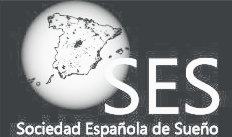A Bayesian cost-effectiveness analysis of a telemedicine-based strategy for the management of sleep apnoea: a multicentre randomised controlled trial
Isetta V, Negrín MA, Monasterio C, Masa JF, Feu N, Álvarez A, Campos-Rodriguez F, Ruiz C, Abad J, Vázquez-Polo FJ, Farré R, Galdeano M, Lloberes P, Embid C, de la Peña M, Puertas J, Dalmases M, Salord N, Corral J, Jurado B, León C, Egea C, Muñoz A, Parra O, Cambrodi R, Martel-Escobar M, Arqué M, Montserrat JM; SPANISH SLEEP NETWORK. Collaborators: (11) Gasa M, García-Ledesma E, Rosco-Due MI, Durán J, Reyes-Nuñez N, Pou S, Campo FD, Sampol G, Romero O, Torres M. Thorax. 2015 Nov;70(11):1054-61. Epub 2015 Aug 26.
BACKGROUND: Compliance with continuous positive airway pressure (CPAP) therapy is essential in patients with obstructive sleep apnoea (OSA), but adequate control is not always possible. This is clinically important because CPAP can reverse the morbidity and mortality associated with OSA. Telemedicine, with support provided via a web platform and video conferences, could represent a cost-effective alternative to standard care management.
AIM:To assess the telemedicine impact on treatment compliance, cost-effectiveness and improvement in quality of life (QoL) when compared with traditional face-to-face follow-up.
METHODS:A randomised controlled trial was performed to compare a telemedicine-based CPAP follow-up strategy with standard face-to-face management. Consecutive OSA patients requiring CPAP treatment, with sufficient internet skills and who agreed to participate, were enrolled. They were followed-up at 1, 3 and 6 months and answered surveys about sleep, CPAP side effects and lifestyle. We compared CPAP compliance, cost-effectiveness and QoL between the beginning and the end of the study. A Bayesian cost-effectiveness analysis with non-informative priors was performed.
RESULTS: We randomised 139 patients. At 6 months, we found similar levels of CPAP compliance, and improved daytime sleepiness, QoL, side effects and degree of satisfaction in both groups. Despite requiring more visits, the telemedicine group was more cost-effective: costs were lower and differences in effectiveness were not relevant.
CONCLUSIONS: A telemedicine-based strategy for the follow-up of CPAP treatment in patients with OSA was as effective as standard hospital-based care in terms of CPAP compliance and symptom improvement, with comparable side effects and satisfaction rates. The telemedicine-based strategy had lower total costs due to savings on transport and less lost productivity (indirect costs).
Ventana Científica. Diciembre 2015. Artículo 47
A Bayesian cost-effectiveness analysis of a telemedicine-based strategy for the management of sleep apnoea: a multicentre randomised controlled trial


